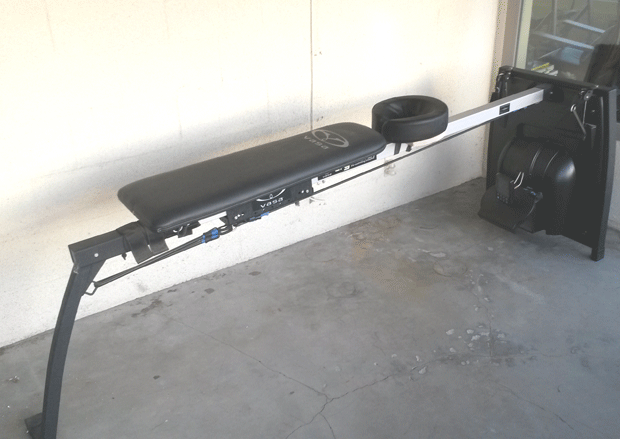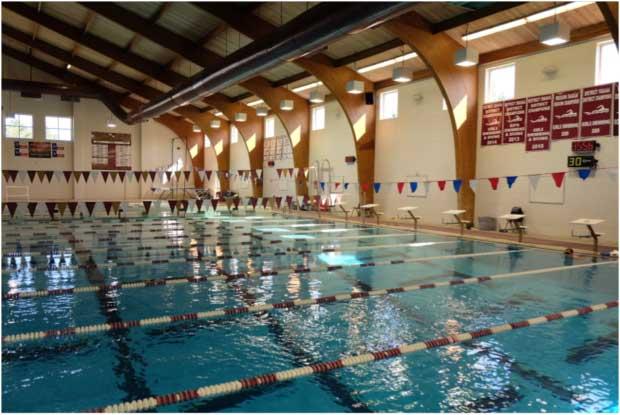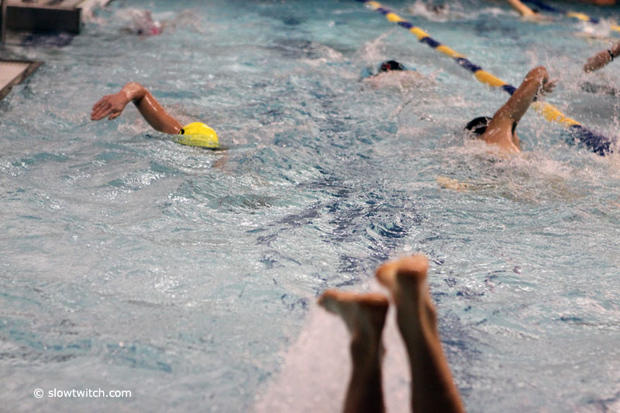A (Not So) Secret Swim Weapon
I saw a thread on our Reader Forum today about hybrid freestyle. This refers to hip- versus shoulder-driven freestyle, and smooshing together both into one technique. Know what I’m talking about? Only vaguely? You’re not alone. Topics like this take us into the tall weeds of swim technique and, very frankly, a swimmer needs to be pretty advanced before he can feel or alter his or her swimming to suit.
Fixing technical problems is begins at a lower, easier level. I’m not a big device guy, but there is one training aid that is vastly underappreciated and underutilized, and it’s the symmetric snorkel.
Do I mean the center mount snorkel? Yes. Then why am I changing the name? Because there’s a new product in that same genus that expands the genus and requires its renaming. I’ll get to this new product in a moment.
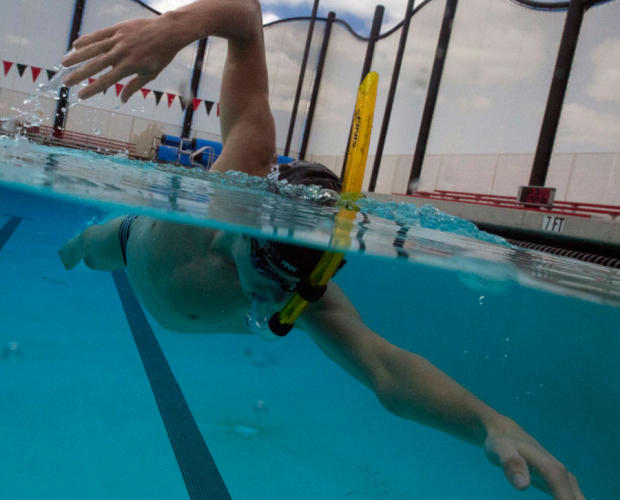
Who uses symmetric snorkels? Is this for mid-pack adult-onset swimmers? Yes! But it’s used all the way up to the highest levels of swimming. I was talking to the maker of one such device who’d just exhibited at the recent Life Time Chicago Triathlon, and he remarked to me that most of the triathletes passed the booth by, but seasoned swimmers who’d gone through high-powered Division I college programs stopped, intrigued at the most recent developments in a technology they routinely use in their training.
FINIS CENTER-MOUNT SNORKEL
I traded emails with South African Henri Schoeman last week, certainly the surprise in the Olympic Triathlon, earning a bronze medal though never having podiumed in a WTS event. This pic above is of Henri and his Finis Center Mount snorkel, who writes this, "is one of my favorite and the most beneficial pieces of equipment in my swim bag,” and he uses it in, "every swimming session."
Henri writes that his snorkel, "places my head in the correct position without having to worry about breathing to the side. I can focus on head position. “
Henri is sponsored by Finis, his brother Riann is a multiple-time Olympian. The entire Schoeman family has a tight relationship with Finis so Henri might be expected to say this. But the fact remains that this device is a centerpiece (pardon the pun) of swim training for many top swimmers.
AMEO POWERBREATHER
The product I'm going to talk about here is why I'm expanding the genus to "symmetric" rather than "center-mount" snorkel. Nothing center-mount about this. But its use is basically the same. What’s the difference? The major enhancements are that you don’t need to clear water with a powerful blow after a flip-turn, and more importantly you exhale out a valve right at the mouth and you inhale through a pair of periscope tubes at the sides of your head.
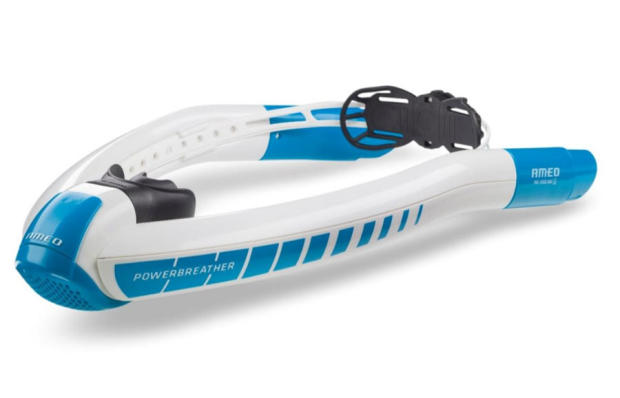
This means you’re never inhaling exhaled air (CO2). This device also has a twist-lock affixing it to your head, like your bicycle helmet.
Jan Frodeno uses one of these, and when I ask both Jan and Henri how and when and why they use these devices they tend to talk in terms similar one to another, and similar to my own experience with these devices.
BENEFITS OF SYMMETRIC SNORKELS
If you ask Tim Elson of Finis, who pioneered this product a generation ago, it’s the luxury to think about nothing but the technical issue on your mind. You don’t have to interrupt your concentration to breathe. Okay. That’s fine as far as it goes. But Tim’s milieu is top-caliber swimmers. I’m not one of those.
To explain why I use devices like this (currently I’m using a Powerbreather) here’s a pool experiment for you. Did you watch the Olympic 50 meter freestyle? Both the men and women take 2, or 1, or no breaths during that race. They almost all swim with pretty vigorous 6-beat kicks with their heads down (little or no breathing) during that swim. The experiment I have for you is to swim several strokes like that. Put your head down, don’t breathe, and go 6 or 8 strokes with a 6-beat kick.
If you feel silly and uncoordinated let me tell you why: You have a significant hitch in your stroke that won’t allow you to swim with anything close to symmetry. Fixing this asymmetry is the low hanging fruit. There is a lot of speed right there if you fix that. Stroke hitches like this explain why athletes report swimming 15,000 or 20,000 yards a week for a several-month stretch and never get any faster.
Jan Frodeno uses his Powerbreather for "slower warm ups” of anywhere from 1000 to 2000 meters, and it, "let's me focus on my technique.” The Powerbreather’s twin tubes have 1-way valves that are slightly hypoxic and Jan likes that hypoxic element to the Powerbreather. Henri feels likewise, going further and taping up the holes on his Finis to make it even more hypoxic than it is. Jan says this hypoxic feature during his long warm-ups helps him, “hold [his technique] longer when the going gets tough during a main set.”
I don’t like that, and the Powerbreather will shortly have 3 options to choose from, offering a gradient of hypoxic options (starting from almost no hypoxic sensation).
Then Henri gets down to the meat of why this device is beneficial, his "focus on rotating equally to both sides while swimming.” I remember looking at a video of Michael Phelps head on, camera half-in, half-out of the water, and it was remarkable how completely symmetrical his stroke. I think a lot of really good swimmers almost take this for granted, and that is why those enmeshed in the world of world-class swim don’t appreciate how incredibly asymmetric the strokes of adult onset swimmers.
As with Jan, I use a symmetric snorkel during warm-up. I never swim hard with this device. My goals are stroke symmetry, kick symmetry, head position, my hand position immediately after the catch (does it stay near the surface of the water during the extend/glide phase?), and my arm mechanics during the pull phase.
After my warm-up, my stroke mechanics and body position are remarkably better and I can feel this immediately, in the first length I swim after a warm-up using this class of device.
Henri Schoeman also “use[s] my snorkel for kicking sets,” and I do the same, but probably for a different reason. For me it’s my spinal stenosis that keeps me from looking forward if I use a kickboard.
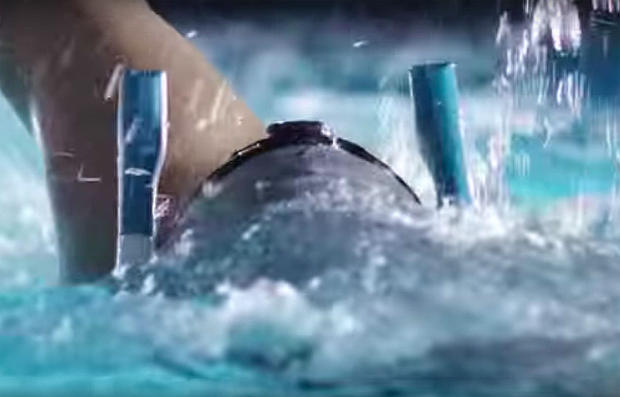
These center-mount or symmetric snorkels are an acquired taste. You have to get used to any of them. The Ameo Powerbreather I’m now using has its idiosycracies: You need to place the rear-fixing twist-lock closure at a rather precise spot near the top of the head to keep it in place while pushing off the wall; after flip-turns clearing the water is easier than with typical center-mount snorkels but does take a bit of getting used to; because the device attaches to positively to your head you need to know to push directly up with the mouthpiece if any water gets in and you panic (you can’t just pull the mouthpiece forward to take it out of your mouth).
I don’t find any of this a problem because I don’t flip-turn when using this device. In fact, I stop and take a couple of extra breaths every length because my goal here is stroke mechanics. I want to be very well oxygenated every length of the pool so that I can concentrate on my stroke, my kick, my body position and proper rotation without over-rotation. There is a time to swim fast, and hard, and this isn’t that time.
OTHER SYMMETRIC SNORKELS
Finis had a patent on center-mount snorkels and that’s the reason why you all thought it was simply a cult product that no other company thought important to make. Kiefer, TYR, Arena, and Speedo all have them now. Michael Phelps has one now as part of his MP collection. This is now becoming a ubiquitous product. I am certainly not the master of swim, and there are many people whose advice you should take ahead of mine, but if you consider all the swim aids out there – paddles, buoys, kickboards, zoomers – if you let me keep one device only I’d jettison the rest and keep this one.
Happily they aren’t expensive. You can buy one of these for $20, or $40, or more, and it just depends on quality, features, whether you want a 1-way valve. The most you can spend is between $100 and $150 that’s if you choose the Ameo Powerbreather that Jan uses described here. There are 3 models, the Sport, Lap and Wave editions and I find that the Sport ($109) does me just fine. Here is Amazon’s page on it and here is the Ameo’s English language page. Here is a page Finis devotes to this product class.


